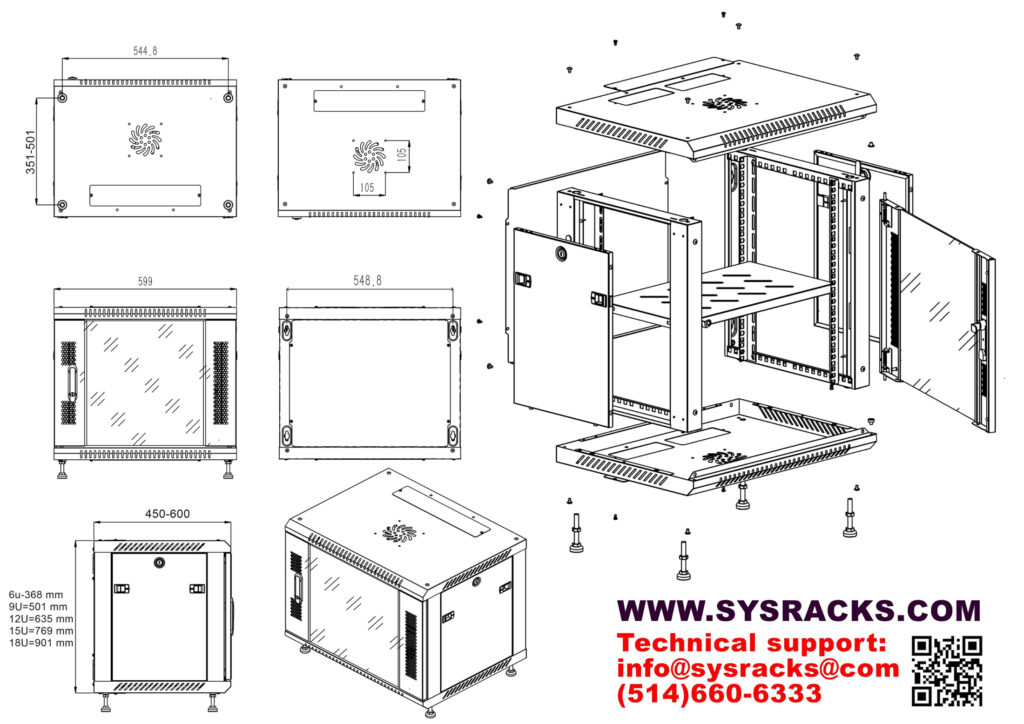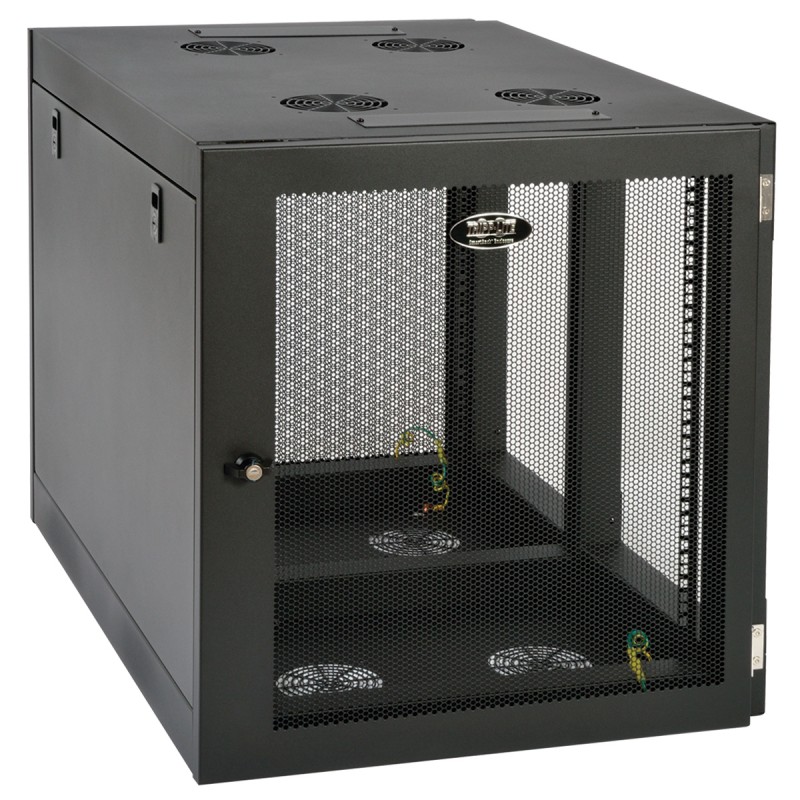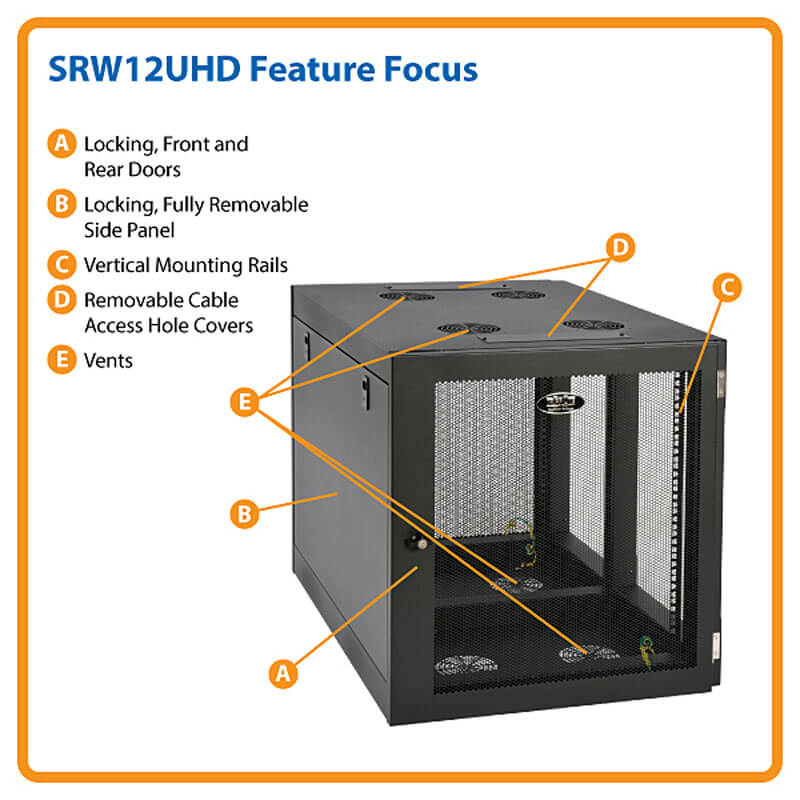Understanding 12U Rack Cabinet Dimensions

Rack cabinets are essential for housing and organizing electronic equipment in data centers, server rooms, and other technical environments. Understanding the dimensions of these cabinets is crucial for ensuring proper equipment installation and efficient space utilization. This section will delve into the meaning of “12U,” the standard unit of measurement used for rack cabinets, and the relationship between rack units (U) and physical height.
Rack Units (U)
Rack units (U) are the standard unit of measurement for the vertical space within a rack cabinet. A single rack unit (1U) corresponds to a specific height of 1.75 inches (44.45 millimeters). The number of rack units (U) a cabinet can accommodate determines its vertical capacity. For instance, a 12U rack cabinet provides 12 units of vertical space for mounting equipment.
Relationship Between Rack Units (U) and Physical Height
The relationship between rack units (U) and physical height is straightforward: each rack unit (1U) represents 1.75 inches (44.45 millimeters) of vertical space. To calculate the physical height of a rack cabinet, multiply the number of rack units (U) by the height of a single rack unit (1.75 inches).
For example, a 12U rack cabinet would have a physical height of:
12U x 1.75 inches/U = 21 inches
This means that a 12U rack cabinet can accommodate equipment with a combined height of up to 21 inches.
Common 12U Rack Cabinet Dimensions

The dimensions of a 12U rack cabinet are crucial for ensuring proper equipment installation and airflow within the enclosure. This section will Artikel the typical dimensions of 12U rack cabinets, highlighting the differences between various types and the factors that influence their choice.
Standard Dimensions
The most common dimensions for 12U rack cabinets are as follows:
| Dimension | Typical Range |
|---|---|
| Width | 19 inches (48.26 cm) |
| Depth | 24 inches (61 cm) to 36 inches (91.44 cm) |
| Height | 21.6 inches (54.86 cm) |
These dimensions are based on the standard EIA-310-D specification, which defines the mounting holes and spacing for rack-mountable equipment. The width of 19 inches is a standard for all rack cabinets, ensuring compatibility with a wide range of equipment. The depth can vary depending on the specific needs of the installation, with deeper cabinets offering more space for equipment and cabling.
Wall-Mount vs. Floor-Standing
The choice between a wall-mount and floor-standing 12U rack cabinet depends on factors such as available space, weight of the equipment, and accessibility.
Wall-Mount
Wall-mount 12U rack cabinets are designed for installations where space is limited. They typically have a shallower depth compared to floor-standing models, often ranging from 12 to 18 inches (30.48 to 45.72 cm). This design allows for installation in tight spaces, maximizing vertical space utilization.
Floor-Standing
Floor-standing 12U rack cabinets offer more flexibility and can accommodate heavier equipment. They typically have a deeper depth, ranging from 24 to 36 inches (61 to 91.44 cm), providing ample space for cabling and airflow. These cabinets are often equipped with casters for easy mobility and have a higher weight capacity.
Factors Influencing Dimension Choice
Several factors influence the choice of 12U rack cabinet dimensions, including:
- Equipment Size and Weight: The size and weight of the equipment to be installed are primary considerations. Ensure the cabinet has sufficient depth and weight capacity to accommodate the equipment securely.
- Available Space: The available space in the installation area will determine the cabinet’s type and dimensions. Wall-mount cabinets are ideal for limited spaces, while floor-standing cabinets offer more flexibility.
- Accessibility: Ensure easy access to equipment and cabling within the cabinet. Consider the height and depth of the cabinet for comfortable reach and maintenance.
- Airflow: Proper airflow is essential for preventing overheating of equipment. Choose a cabinet with adequate ventilation and space for cable management to facilitate airflow.
- Budget: The cost of the cabinet will vary depending on its size, features, and material. Consider your budget and choose a cabinet that meets your needs without exceeding your financial limitations.
Applications and Uses of 12U Rack Cabinets: 12u Rack Cabinet Dimensions

12U rack cabinets, despite their compact size, offer a versatile solution for housing various equipment across different industries. They are ideal for situations where space is limited or a dedicated, organized setup is required.
Equipment Housed in 12U Rack Cabinets
12U rack cabinets can accommodate a wide range of equipment, including:
- Network Devices: Switches, routers, and firewalls, particularly in small to medium-sized networks.
- Servers: Small form factor servers, especially in home or small office environments.
- Audio/Video Equipment: Mixers, amplifiers, and other audio equipment for professional or home studios.
- Security Systems: Network video recorders (NVRs), intrusion detection systems, and access control panels.
- Telecommunications Equipment: Modems, DSLAMs, and other network interface devices.
- Data Storage Devices: NAS (Network Attached Storage) devices and small RAID arrays.
Advantages of Using 12U Rack Cabinets, 12u rack cabinet dimensions
12U rack cabinets provide several advantages:
- Space Efficiency: They maximize space utilization by stacking equipment vertically, making them suitable for small areas.
- Organization and Accessibility: The standardized rack mount system allows for easy installation, removal, and maintenance of equipment.
- Cable Management: Rack cabinets offer dedicated cable management features, ensuring a clean and organized setup.
- Security and Protection: They protect equipment from dust, spills, and unauthorized access, ensuring reliable operation.
- Scalability: 12U rack cabinets can be expanded or upgraded as your needs evolve.
Disadvantages of Using 12U Rack Cabinets
While 12U rack cabinets offer many benefits, they also have some limitations:
- Limited Capacity: 12U cabinets have a smaller capacity compared to larger rack cabinets, restricting the amount of equipment they can house.
- Power Consumption: Depending on the equipment housed, power consumption can be a concern due to limited space for power distribution units.
- Cooling Challenges: Smaller rack cabinets can face cooling challenges, especially when housing high-power devices.
Applications of 12U Rack Cabinets in Different Industries
12U rack cabinets find applications across various industries:
IT Industry
- Small Offices and Home Offices (SOHO): 12U rack cabinets are ideal for managing network equipment, servers, and storage devices in small spaces.
- Data Centers: While larger rack cabinets are common in data centers, 12U cabinets can be used for smaller, dedicated applications like server rooms or network closets.
Telecommunications Industry
- Small Cell Deployment: 12U rack cabinets are used to house telecommunications equipment in small cell deployments, which provide improved network coverage in densely populated areas.
- Business and Residential Network Connections: They are used to manage modems, DSLAMs, and other network interface devices for both business and residential customers.
Audio/Video Industry
- Recording Studios: 12U rack cabinets are used to house audio equipment like mixers, amplifiers, and effects processors.
- Live Sound Systems: They can be used for smaller live sound applications, like concerts in smaller venues or corporate events.
12u rack cabinet dimensions – A 12U rack cabinet, with its standardized dimensions, provides a structured environment for housing servers and network equipment. While the traditional metal doors offer security and ventilation, consider enhancing the aesthetics with modern glass cabinet doors for a sleek and contemporary look.
These doors not only provide visibility to the equipment within but also add a touch of sophistication to the rack cabinet’s design. Whether you choose clear, frosted, or tinted glass, the modern aesthetic complements the functionality of the 12U rack cabinet.
The standard 12U rack cabinet, with its defined dimensions, offers a structured space for equipment organization. Similar to the meticulous arrangement within a 12U rack, a laundry room ironing board cabinet provides a designated spot for a often-used but space-consuming appliance.
Just as a 12U rack cabinet neatly houses servers and networking equipment, a laundry room ironing board cabinet ensures that your ironing board is tucked away, ready for use when needed.
